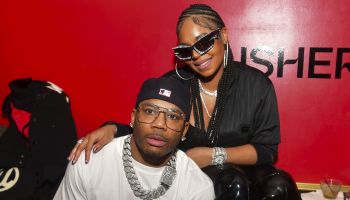
Source: Guerilla / Getty
I was having a conversation with my colleagues about characters on TV I identified with growing up, and my answers were two of the most memorable animated characters of the 90s golden cartoon era–Suzie Carmichael from ‘Rugrats’ and Patty Mayonnaise from ‘Doug.’
Patty Mayonnaise, the object of Doug’s attention on the animated Nickelodeon show by his namesake, was dark, brown, sassy and independent and reminded me a lot of myself. My identification with this character caught some of my peers by surprise, especially since from their vantage point, Patty Mayonnaise was a tan, white girl.
Mind blown.
A heated debate with my peers sparked a conversation about color politics on the beloved show. Thinking of color in the context of a children’s cartoon is nuanced, of course, especially in the case of ‘Doug’ where the characters were literally rainbow colored (even though die-hard fans would debate you over Skeeter’s Blackness). It seems in the midst of the overall racial ambiguity of the show, some people used context clues to categorize the characters—accent, personality, facial features, and hair color denoted ethnic background to some viewers. For other 90s kids, they didn’t think about race at all, mostly because of the innocence of childhood and partly due to the fact that, given it was a cartoon, there are no color rules.
A little investigation into the thinking process of the show’s creator, Jim Jinkins, proved that the color of the characters was based on creative expression, not racial commentary. During an interview with The Huffington Post, Jinkins told the site when it was time to create his characters, he decided to color outside the box.
“Now it’s time to color in the people, so you grab your eight shades of skin, you put them in your hand and start,” he told HuffPo. “But then I looked back up at my full set of 200 design markers and thought, ‘I’m making this up. I can do what I want to do, why stop here.’”
He also denied cult-fan rumors that Skeeter’s character was inspired by a Black man.
“People are certain that Skeeter is an African-American guy,” he explained. “I’m like, ‘well, he’s blue!’ You put together that he’s the music guy and he does some rap stuff or several other things, great. If that’s how you see him, that’s great. It’s not a bad thing, but I never planned it. Skeeter is blue and he’s Doug’s friend.”
There you have it. My belief that Patty was Black is more of an ode to my expansive creativity as a child, than it is a commentary on race and color. The beauty of cartoons is that, those characters can be whomever you need them to be, and that imaginative space is just what little girl me needed.
SOURCE: HUFFPO
RELATED LINKS
‘Claws,’ Beats & ‘Power’: Your 2017 Summer TV Watch Guide
Celebrity Real Life Teachers And Those Who Played Them On TV
Growing Up, I Always Thought Patty Mayonnaise Was Black was originally published on hellobeautiful.com













